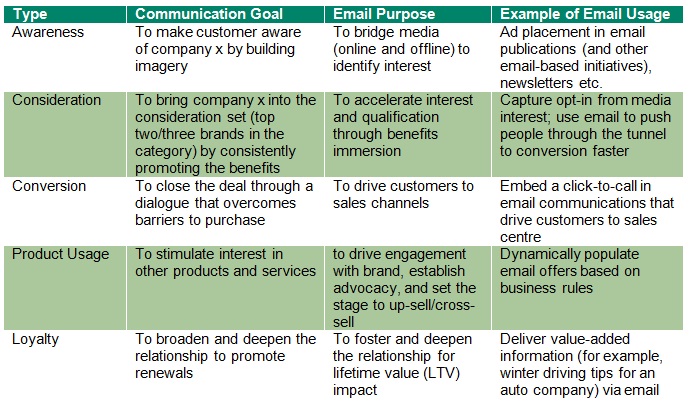In the previous blog entry in this series, we explained an email marketing program in some more detail. In this post, we'll take this a step further by looking at goals.
The first stage in formulating an email marketing strategy begins with outlining the objective(s) of the programme. Ideally, this is aligned to the company strategy and should guide decisions on the output(s) you wish from your campaigns. This is critical, not only on a strategic level, but also defines the metric(s) you use as part of your analysis. Typical examples of outputs would include:
- Retention - to retain our core customer base in response to increasing competition
- Acquisition - to acquire x% new customers this year
- Increase spend per customer - to cross-sell or up-sell a range of products & services to the customer base or new customers
Essentially, programs to support both acquisition & retention strategies for your company. It also important to consider the customer perspective: Why are you sending the email? How does this benefit the customer? This is essential to connect customers with your corporate objectives.
For most companies, the overall goal is to firstly make the individual aware of your company/brand, then for them to consider your product/service as part of a set of top providers in that category. The next step is to convert these individuals to customers, encourage further product/service use, and ultimately gain long-term customer loyalty. There are 5 email types that are widely used to to achieve these goals:
5 Email Types*

From the graphic, you can see most, if not all, email marketing journeys require a start and endpoint. You need organisational input into these journeys as it will make the programme easier to sell internally and more likely to yield a measurable result.
-= David

